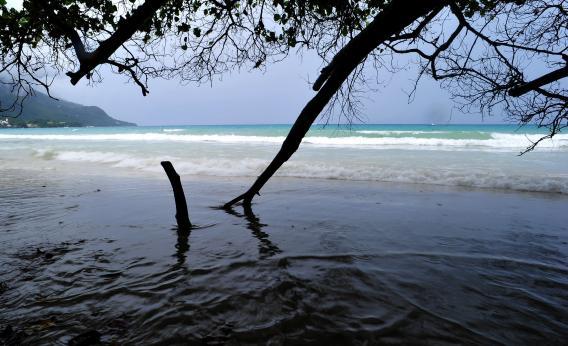William Blake saw the universe in a grain of sand. A team of geologists saw a continent.
In a paper published online Monday in Nature Geoscience, an international research team reports that it has found evidence of a lost “microcontinent” in the Indian Ocean, northeast of Madagascar. The scientists analyzed sands they found on the beaches of the island nation of Mauritius and found traces of an ancient form of the mineral zircon. That’s noteworthy because Mauritius is a relatively young, volcanic island, while zircon of that age is typically found in much older, continental crust.*
The researchers propose that the minerals came from a long-submerged landmass that was once wedged between India and Madagascar in a prehistoric supercontinent known as Rodinia. The theory is that, as India and Madagascar began to drift apart some 85 million years ago, the landmass broke apart and sank, Atlantis-style. The scientists have dubbed their lost microcontinent “Mauritia.”
As ScienceNow’s Tim Wogan explains, the first clue was a stronger-than-expected gravitational field around islands like Mauritius, the Seychelles, and the Maldives, which could indicate unusually thick crust. Andreas Munster of Germany’s University of Munster told ScienceNow that the zircon “could be a smoking gun” that helps to prove the lost-continent theory. But Jerome Dyment of the Paris Institute of Earth Physics told National Geographic he’s not convinced. The traces of ancient zircon in the Mauritius sand could have come from a ship’s ballast or modern construction materials, he argued.
But if the researchers are right, Mauritia may turn out not to be the only ancient continental fragment lurking deep beneath the sea. Oxford geologist Conall Mac Niocaill told the magazine there are several other places on earth whose gravitational field might suggest the presence of submerged continental crust.
*Correction, Feb. 26, 9:44 a.m.: This article originally implied that the presence of zircon in the sand was noteworthy in itself. Rather, it was the age of the zircon in the sand, as determined by radiometric dating, that suggested the association with continental crust. Thanks to reader Bryan Sell for pointing out the distinction.
